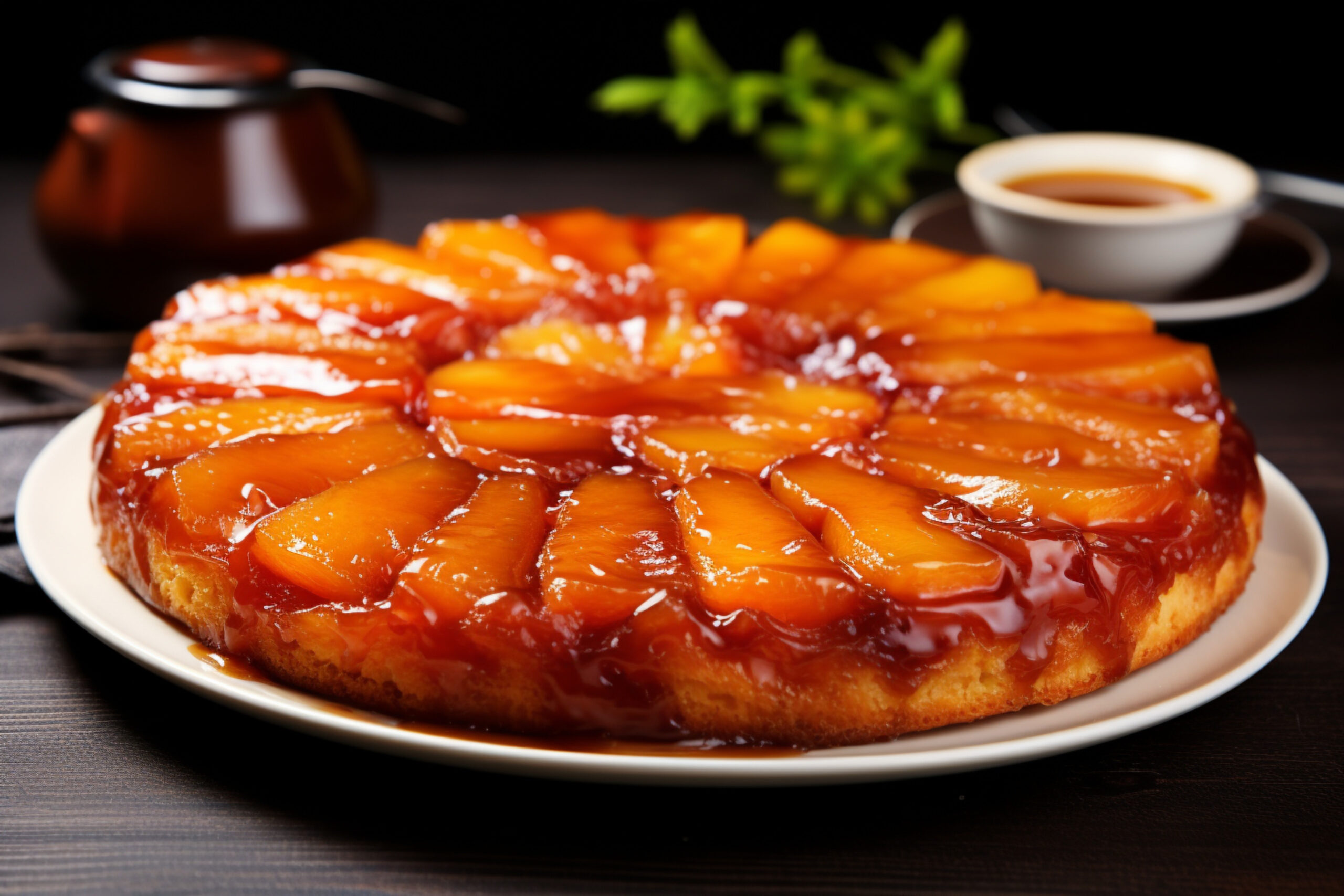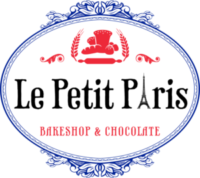 Tarte Tatin: A Culinary Heritage Reinvented
Tarte Tatin: A Culinary Heritage Reinvented
Introduction
The tarte Tatin is an icon of French pastry. This simple yet exquisite dessert, composed of caramelized apples and puff pastry, has captured the hearts of gourmets around the world. Here, we explore the fascinating history of the tarte Tatin, its preparation technique, modern adaptations, and its revival at “Le Petit Paris.”
Part I: History of the Tarte Tatin
Legendary Origin
The most popular story about the creation of the tarte Tatin dates back to the late 19th century. The Tatin sisters, Stéphanie and Caroline, ran the Hôtel Tatin in Lamotte-Beuvron, in the Sologne region. According to legend, Stéphanie, while preparing an apple tart, accidentally left the apples cooking too long in butter and sugar. To save the dessert, she added the pastry on top of the apples and baked the whole thing. The result, an upside-down tart, was an immediate success with the hotel’s guests (Wikipedia) (Bake from Scratch – #thebakefeed).
Historical Truth
While the legend of the tarte Tatin is charming, historical facts are equally captivating. The Tatin sisters, though having popularized the tart in their hotel, never claimed its creation as an intentional act. In reality, the tarte Tatin might be an improved version of the “tarte solognote,” a regional specialty made with apples or pears (Wikipedia) (French Culture Info). Maurice Curnonsky, a famous gastronomic critic, and the restaurant Maxim’s in Paris played crucial roles in recognizing and spreading the tarte Tatin beyond French borders (What’s Cooking America).
Popularity and International Spread
Maxim’s restaurant was instrumental in popularizing the tarte Tatin internationally. According to some stories, the owner of Maxim’s sent a spy to obtain the Tatin sisters’ secret recipe. Once the recipe was introduced to Maxim’s menu, the tart became a worldwide sensation (What’s Cooking America).
Part II: The Technique of Tarte Tatin
Traditional Ingredients
The essential ingredients of the tarte Tatin are simple but high quality: firm apples like Reine des Reinettes or Golden Delicious, sugar, butter, and shortcrust or puff pastry (FOODICLES) (French Culture Info).
Preparation Steps
- Preparing the Apples and Caramel: Apples are peeled, quartered, and cooked in a mixture of butter and sugar until caramelized.
- Arranging the Apples and Adding the Pastry: The caramelized apples are arranged in a mold, covered with pastry, and baked.
- Baking and Flipping the Tart: After baking, the tart is flipped onto a plate to reveal the caramelized apples on top (FOODICLES) (What’s Cooking America).
Variations and Adaptations
The tarte Tatin can be made with other fruits like pears, peaches, or even vegetables like tomatoes for savory versions (FOODICLES). Modern chefs continue to experiment and add personal touches to this classic recipe.
Part III: Cultural and Gastronomic Aspects
Tarte Tatin in French Culture
The tarte Tatin holds a special place in French gastronomy. It often appears in cookbooks and culinary shows, and is served in many renowned restaurants in France and abroad.
Food and Wine Pairings
To accompany a tarte Tatin, sweet white wines like Sauternes or sweet Loire wines are excellent choices. For a bolder experience, a dry Norman cider pairs well with the caramelized flavors of the tart.
Presentation and Occasions
The tarte Tatin is ideal for family meals or formal dinners. Served warm with a scoop of vanilla ice cream or a dollop of crème fraîche, it always impresses. For special occasions, it can be presented as individual tartlets.
Part IV: Tarte Tatin at “Le Petit Paris”
Return to the Bakery
At “Le Petit Paris,” we are proud to reintroduce the tarte Tatin to our menu. Inspired by the history and timeless charm of this dessert, we decided to honor the Tatin sisters by revisiting this classic recipe with local and seasonal ingredients.
Why and How We Decided to Reintroduce This Classic
The decision to reintroduce the tarte Tatin was born from our desire to share authentic culinary traditions with our customers. Using local apples and following the traditional method, we offer our customers an authentic taste experience.
Ingredients and Preparation Specific to “Le Petit Paris”
At “Le Petit Paris,” we use two types of apples: Golden for their firmness and Granny Smith for their slight acidity. Our apples are presented in slices rather than quarters for a unique and refined texture.
Customer Reaction and Current Popularity
Since its return, the tarte Tatin has not yet become an undisputed favorite, but more and more customers are trying it and being convinced. Positive feedback shows that this reintroduction meets a growing demand for authentic and homemade desserts.
Part V: Tarte Tatin in the United States
In the United States, the tarte Tatin has quickly found its place in gastronomy, thanks in part to expatriate French chefs and cookbooks. Served in many restaurants and bakeries, it is often accompanied by vanilla ice cream or whipped cream. American chefs enjoy experimenting with local ingredients and innovative adaptations, contributing to the continued popularity of this classic dessert.
Conclusion
In summary, the tarte Tatin is much more than a simple dessert: it is a story of tradition, innovation, and culinary passion. From its legendary origins to its worldwide popularity, through the kitchens of “Le Petit Paris” and its adoption in the United States, the tarte Tatin continues to captivate and inspire pastry lovers around the world.
Sources and References
- Wikipedia. “Tarte Tatin.” Wikipedia
- Bake from Scratch. “Origin of A Classic: Tarte Tatin.” Bake from Scratch
- Foodicles. “Tarte Tatin History & Origins.” Foodicles
- What’s Cooking America. “Tarte Tatin History.” What’s Cooking America
- French Culture Info. “What is the real history of the Tarte Tatin?” French Culture Info
Appendices
Detailed Recipe of Tarte Tatin
Ingredients:
- 3 Golden apples
- 3 Granny Smith apples
- 150 g sugar
- 100 g butter
- 1 shortcrust or puff pastry
Instructions:
- Preheat the oven to 180°C (350°F).
- Peel and slice the apples.
- In a skillet, melt the butter and add the sugar to make a caramel.
- Add the apples and cook until they are well caramelized.
- Arrange the apples in a mold, cover with pastry, and bake for 30-35 minutes.
- Flip the tart onto a plate and serve warm with crème fraîche or vanilla ice cream.
For more about our offerings, read our article on The Croissant.

Leave A Comment